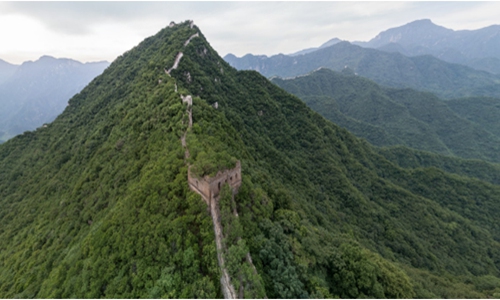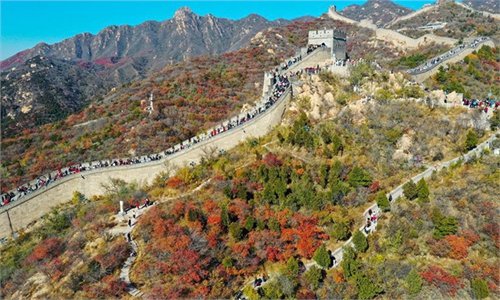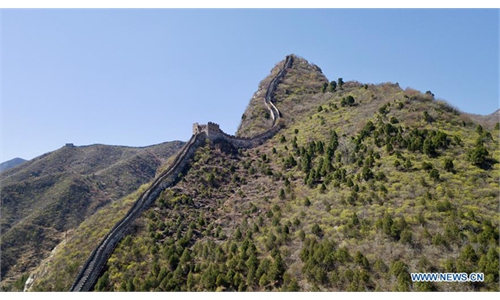
Photo: Courtesy of China’s National Cultural Heritage Administration
The Great Wall might gain the honor of being a demonstration case for protection and conservation from UNESCO at the 44th session of the World Heritage Committee in July, Chinese officials announced on Tuesday.
Yan Yalin, an official with China's National Cultural Heritage Administration (NCHA), said at a promotion conference for the Great Wall on Tuesday that according to a draft UNESCO just released about the 44th session of the World Heritage Committee, the Great Wall will be given the honor of being a model for protection and conservation, as will two natural heritage sites in Cote d'Ivoire.
"If the draft is passed at the upcoming conference, the Great Wall will be China's second site to win the title following the Grand Canal," said Yan.
The 44th session of the World Heritage Committee is set to be held in Fuzhou, East China's Fujian Province from July 16 to 31.
According to Yan, the world heritage center believes that the Chinese government has taken active and effective measures for the Great Wall in recent years to ensure that its outstanding universal value is properly protected.
The Great Wall runs through 404 counties in 15 provinces, municipalities, and districts across the country. The total length of the wall is 21,196.18 kilometers, and the Great Wall built during the Ming Dynasty (1368-1644) is 8,851.8 kilometers long.
Three sites along the Great Wall have been chosen for the promotion work for China's significant archaeological discoveries, including the Jiankou section of the Great Wall in Beijing, Qingpingbao, a fortress in Northwest China's Shaanxi Province, and the Shaliangzi site, which contains an ancient food supply site in North China's Inner Mongolia Autonomous Region.
Located in Beijing's suburban Huairou District, the Jiankou section is one of the most dangerous parts of the Great Wall and is known by hikers as "the wild Great Wall." But some parts have been damaged due to natural disasters and human impact, requiring maintenance and reinforcement.
Zhang Jianwei, a professor from the School of Archaeology and Museology at Peking University, told the Global Times that the team is implementing a new archaeological approach, which is to carry out the work of archeology and restoration simultaneously.
"We are building a 3D model to try to restore the original look of the Jiankou Great Wall," Zhang said, adding that the digital model could help them to re-correct some of their mistakes during the process.
The Qingpingbao site is a rare Great Wall fort from the Ming Dynasty, and a lot of cultural relics have been unearthed there, giving clues to the dynasty's border defense, architectural construction, and cultural and ethnic integration.
The Shaliangzi site has yielded a large number of millet and pottery pots, and it is presumed to have owned a granary building. It is the first time that a granary construction site has been excavated in the area along the northern Great Wall, filling a gap in the study of the frontier defense system in the Han Dynasty (206BC-AD220).




